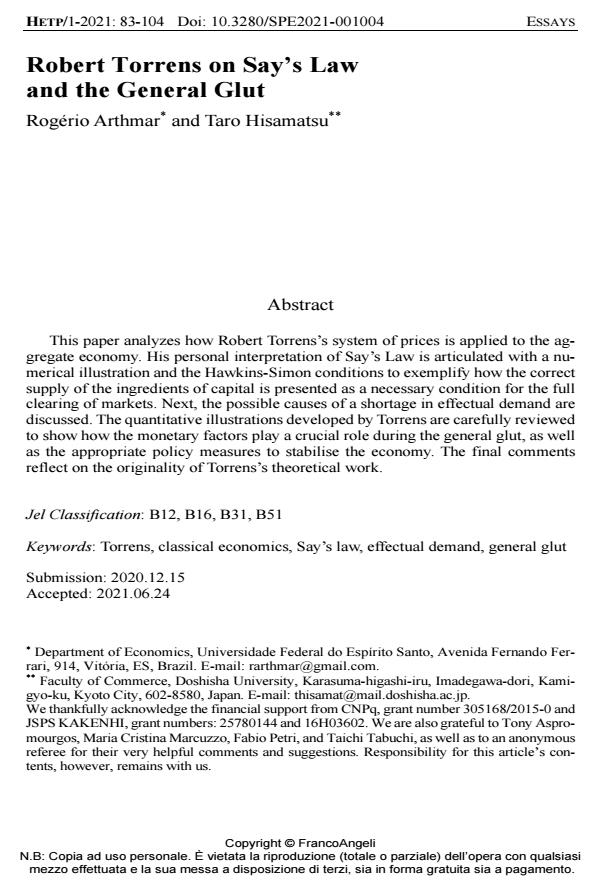Robert Torrens on Say’s Law and the General Glut
Titolo Rivista HISTORY OF ECONOMIC THOUGHT AND POLICY
Autori/Curatori Rogério Arthmar, Taro Hisamatsu
Anno di pubblicazione 2021 Fascicolo 2021/1
Lingua Inglese Numero pagine 23 P. 83-105 Dimensione file 307 KB
DOI 10.3280/SPE2021-001004
Il DOI è il codice a barre della proprietà intellettuale: per saperne di più
clicca qui
Qui sotto puoi vedere in anteprima la prima pagina di questo articolo.
Se questo articolo ti interessa, lo puoi acquistare (e scaricare in formato pdf) seguendo le facili indicazioni per acquistare il download credit. Acquista Download Credits per scaricare questo Articolo in formato PDF

FrancoAngeli è membro della Publishers International Linking Association, Inc (PILA)associazione indipendente e non profit per facilitare (attraverso i servizi tecnologici implementati da CrossRef.org) l’accesso degli studiosi ai contenuti digitali nelle pubblicazioni professionali e scientifiche
This paper analyzes how Robert Torrens’s system of prices is applied to the aggregate economy. His personal interpretation of Say’s Law is articulated with a numerical illustration and the Hawkins-Simon conditions to exemplify how the correct supply of the ingredients of capital is presented as a necessary condition for the full clearing of markets. Next, the possible causes of a shortage in effectual demand are discussed. The quantitative illustrations developed by Torrens are carefully reviewed to show how the monetary factors play a crucial role during the general glut, as well as the appropriate policy measures to stabilise the economy. The final comments reflect on the originality of Torrens’s theoretical work.
Parole chiave:Torrens, classical economics, Say’s law, effectual demand, general glut
Jel codes:B12, B16, B31, B51
Rogério Arthmar, Taro Hisamatsu, Robert Torrens on Say’s Law and the General Glut in "HISTORY OF ECONOMIC THOUGHT AND POLICY" 1/2021, pp 83-105, DOI: 10.3280/SPE2021-001004